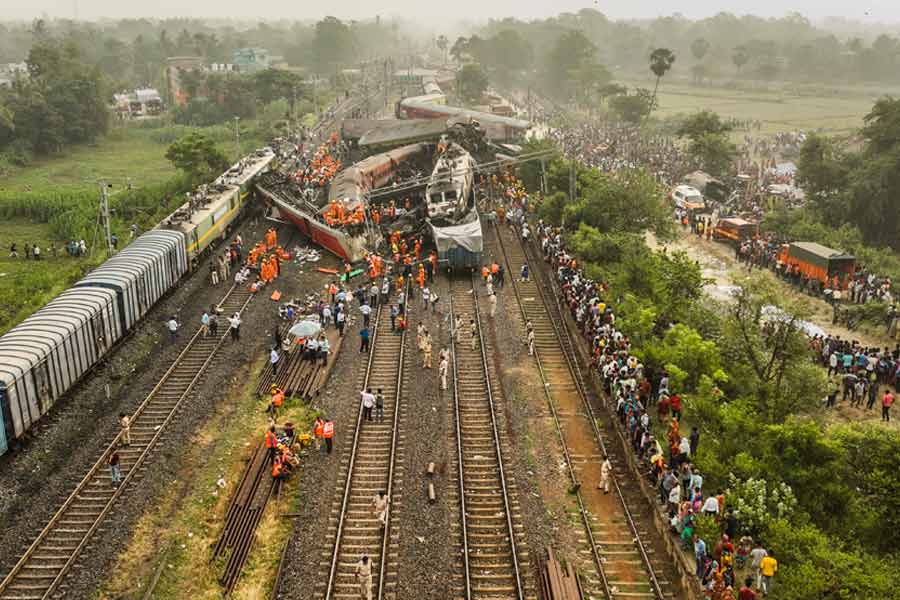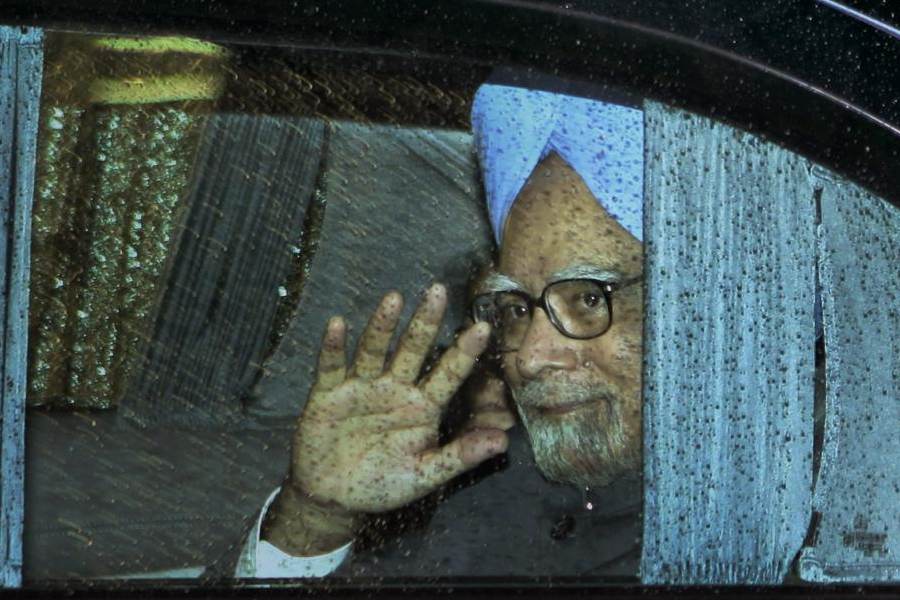The report of a preliminary investigation jointly conducted by a five-member team of senior railway officials from Kharagpur and Balasore pointed towards a “signaling failure” that may have led to what Bengal chief minister Mamata Banerjee called “worst train accident of the century”.
The report, accessed by The Telegraph Online, doesn’t, however, specify whether that “signaling fault” was on account of a glitch in the automated system or whether it was a man-made error.
To understand what the report states, it is first necessary to understand how the accident took place.
The 12841 Up Howrah – Chennai Coromandal Express had passed the Khantapara Railway Station in Odisha’s Balasore around 6.52 PM on Friday and was moving south towards Chennai at an estimated speed of around 128 kmph. The train was supposed to take the Up mainline for which it had a green signal just ahead of the Bahanaga Bazar station close to which the accident took place about three minutes later.
Instead of taking the main line, the train took the loop line and collided head-on with a goods train that was stationary on the tracks. While the engine of Coromandal Express went over and piled on the goods train as a result of the high-speed collision, several of its passenger compartments flew off the track and landed on the adjacent down line.
Meanwhile, 12864 Dn SMVT Bengaluru – Howrah Superfast Yesvantpur Express passed Bahanaga Bazar station around 6.55 PM, accelerating at a speed of around 126 kmph on the down line in the opposite direction. Reports suggest that the loco pilot of the train had applied emergency brakes and was able to bring down the speed of the train to 89 kmph in 31 seconds. But that couldn’t prevent parts of the train, also packed with passengers, from colliding with the Coromandal coaches which had landed on its movement track.
Now, what led the Coromandal Express to move to the loop line when it had the signal to move through the main line?
The joint inspection report, in number 4 of its ‘Observation’, states “Point no 17A was found set for Up loop line (in reverse condition) of BNBR station at Km no 255/13-15.”
Translated into layman’s terms, this means that although the train had the green signal to move on the main line, Point 17 A had guided the train towards the loop line even though the signal and point are supposed to work in tandem and synchrony.
“The driver has little to do if the point is set up for a particular track. The point guides the wheels of a train and the best the driver can do is apply brakes. But given the speed at which the train was moving, I doubt if he had sufficient time for that,” a senior official of the south-eastern railway explained.
In the ‘Conclusion’ of its two-page handwritten report, the joint investigation team stated: “We the undersigned after careful observation came to the conclusion that signal was given and taken off (meaning, in railway parlance, turned green) for Up mainline for 12841 but this train entered into Up loop line and dashed with goods train MDD4 which was on Up loop line and derailed. In the meantime, 12864 passed through the Dn mainline and two coaches of it were derailed and capsized.”
The report confirms that 21 coaches of the Coromandal Express jumped tracks as a result of the collision, some of which capsized and even turned turtles.
It also states that while two rearmost coaches of the Yesvantpur Express capsized and toppled beside the Dn mainline of Bahanaga Bazar station, a third coach of the train was also found dashed and damaged.
Till information last received a minimum of 288 passengers from both trains perished and many times that number were fighting for life at various hospitals in Odisha and neighbouring Bengal.
Despite over 24 hours of relentless search and rescue operations conducted by the central and state disaster management teams assisted by locals and armed forces personnel, passengers were still feared trapped inside the wreckage, indicating that the death toll may spike even further.
Prime Minister Narendra Modi, during his visit to the accident site on Saturday, afternoon confirmed having ordered a “high-level probe” and declared that “no one will be spared” and that “the guilty would be given strictest punishment”.
During her visit to the wreckage site, Mamata Banerjee, who has been a railways minister for three terms, blamed the Centre for failing to install the anti-collision system in fast-moving trains. “To the best of my knowledge, these trains did not have the anti-collision device on them. This tragedy could have been averted if the device had been installed,” she said with railways minister Ashwini Vaishnav standing by her side.
“This is our great learning experience. We hope to ensure safer infrastructure for our citizens from here on,” Modi said in Balasore.
Whether that statement would exude confidence among passengers in the age of Vande Bharat and other fast-moving trains in this country is a guess this correspondent wouldn’t want to hazard.











